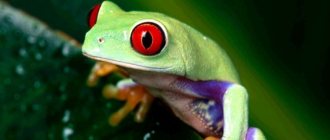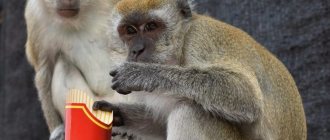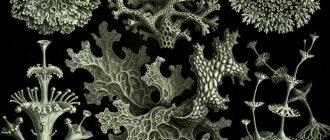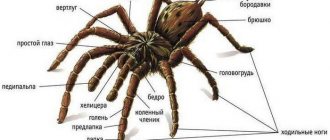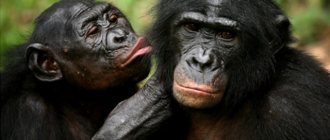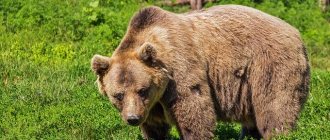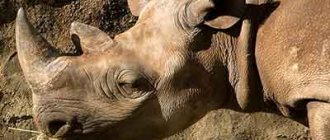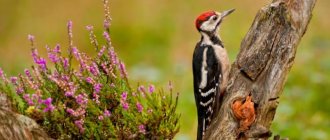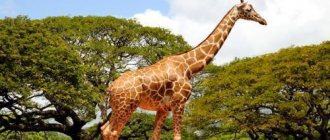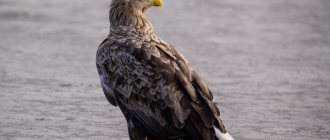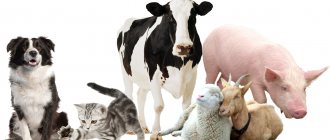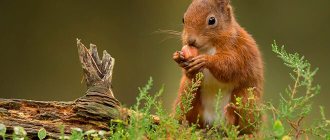Animal classes. Examples
A class is considered to be a collection of living beings belonging to the same type, which are united according to individual characteristics, for example, common origin, morphological characteristics and other differences. There are 5 classes to which vertebrates are classified:
– Mammals;
- Fish;
– Amphibians;
- Birds;
- Reptiles.
Mammals
Mammals are the most highly developed of all other classes. The main distinguishing class feature is the mother feeding her children with milk. Mammals include 4,000 species. They are warm-blooded creatures. The body has wool or hair. The largest representative is the blue whale. Mammals evolved from reptiles millions of years ago. Representatives of the class are: bears, cats, lions, dogs, elephants.
Fish
Pisces are the most diverse class. Marine and freshwater fish can be distinguished. They are aquatic animals. The body is protected by scales. Movement is provided by the tail and fins. Gills help carry out the respiration process by absorbing oxygen from the water. There are peaceful and predatory fish. These include: carp, crucian carp, mackerel, flounder.
Amphibians
The class of amphibians lives both on land and in water. In total, 4000 species are known. It is widespread in humid climates. Representatives of the class have delicate skin. They depend on temperature indicators; activity increases during the warm period. Representatives are frogs and toads, newts.
Birds
Birds are warm-blooded vertebrates. Their body is covered with feathers. They have the ability to fly. There are almost 10 thousand species of this class. There are predators and grass-eating birds, migratory and sedentary birds. Representatives of this class are: swans, hawks, ducks, parrots.
Reptiles
The class of reptiles has 6 thousand species. The habitat is land and water, but they reproduce on land. They are cold-blooded creatures. Representatives of the class are: turtles, crocodiles and snakes.
Animal orders. Examples
Classes are divided into squads. There are 20 orders of mammals.
Monotremes
The order Monotremes includes mammals that have a primitive development and lay eggs during reproduction, but, nevertheless, their young are fed with milk. These include platypuses and echidnas.
Marsupials
The order of Marsupials includes animals that have a pouch in which the baby develops: a kangaroo and a koala.
Predators
The order Carnivora includes carnivores. These include: bears with wolves, seals.
Proboscis
The order Proboscis includes African and Asian elephants.
Aardvarks
The order Aardvarks includes the aardvark or earth pig.
Chiroptera
The order Chiroptera includes living creatures with forelimbs that are, at the same time, arms and wings. This includes bats and flying dogs.
Artiodactyls
The order Artiodactyla includes animals with a pair of toes, the toes ending in hooves. These include: giraffes, wild boars, deer.
Calloused
The order Callous-footed includes animals that are helped when walking by calluses that protect their fingers. This includes camels and llamas.
Partial teeth
The order of Incomplete teeth includes animals with underdeveloped teeth: anteaters and sloths.
Insectivores
The order Insectivores includes animals of ancient origin that feed on insects: shrews and moles.
Woolwings
The order of Woolwings has a flight membrane. These include lemurs.
Primates
The Primate order includes monkeys and humans. This is the highest order of mammals, with a large and highly developed brain.
Pinnipeds
Pinnipeds include large animals with limbs - flippers: walruses and seals. The order Cetaceans includes the largest aquatic animals: whales and dolphins.
Sirens
The order of Sirens includes aquatic herbivores: manatees.
Hyraxes
The order Hyraxes includes small primitive herbivores that are closely related to elephants: hyraxes.
Lizards
Lizards include animals that have scales to protect their bodies; when in danger, they are able to curl up into a ball. This includes ancient dinosaurs and pangolins.
Rodents
The order of Rodents includes animals that have a pair of upper and lower incisors, constantly growing and capable of grinding down. These include: beavers with chipmunks and squirrels.
Lagomorpha
The order Lagomorpha includes small animals that have 2 pairs of upper incisors: rabbits with hares, pikas.
Animal families. Examples
The Family includes a narrow group of animals that have similarities in external characteristics and are related to each other by a common ancestor. The orders are formed by related families. Families can be called by the name of the genus.
For example, the cat family. The names of families may reflect features of the appearance or habits of animals. For example, the family of Narrow-mouthed snakes is named according to its external structure, and the family of Hermit Cancers and Bark Beetles are named according to the way of life they lead. The Feline family includes representatives of the genera: panther, cheetah, manula and domestic cat.
Development of the science of taxonomy
The science that deals with the classification of animals is called taxonomy or systematics. Scientists determine certain relationships between different organisms, and such similarities will be not only in appearance, but also in the structure of the body or at the cellular level. The first observations and division of animals into various classes began in ancient times. In Egypt and Mesopotamia, approximately 5,000 years ago, the first treatises appeared, which described various species of amphibians, birds and reptiles.
The founders of the science of taxonomy were the ancient Greek philosopher Plato and his student Aristotle. They made the first attempt to classify animals according to a certain set of characteristics, which at that time included the appearance of the creatures. Even in Ancient Greece, two most important definitions were introduced - species and family. Subsequently, the works of these scientists were used until the 15th–18th centuries. , when the first attempts were made to more deeply systematize animals based on their internal structure and similar habits.
During the Middle Ages, taxonomy and zoology practically did not develop, which was explained by religious reasons. It was believed that animals were created by the Lord God and classifying them according to various characteristics, much less asking questions about the origin of species, was inappropriate, and often downright dangerous.
Only with the advent of Darwin's treatises did the biology and taxonomy of animals develop and scientists began to study the environment. Initially, all animals were divided into single and multicellular, but later scientists Lamarck and Linnaeus developed the principles of systematic classification, highlighting such living organisms in appropriate tables and diagrams based on their relationship.
All living beings that have similarities and close gene connections are usually classified into a separate group, called the genus. Genus with similar characteristics already have a family designation. This is a more general group that can include thousands and thousands of species. For example, there is the cat family, which includes lions, tigers, leopards, wild and domestic cats. Moreover, according to their description, all of them belong to the order of carnivores and the class of mammals. This hierarchical arrangement of animal species into conventional units significantly simplified their classification.
Animal genera. Examples
A genus contains a certain number of species of living beings that are close to each other in origin. The name of the animal often includes a genus, for example, cat. The genus of cats includes different species: jungle cat, Siamese cat, Persian cat. Genus is a narrower category than family.
There are genera that are distinguished by great species diversity, for example, the genus of garden white butterflies. Some genera are small in number. There are also genera of the same type, consisting of only 1 species. For example, the narwhal, as well as the musk ox, are the only species in their genera.
Sponges
The most primitive multicellular organisms. They live most often in the sea. They are divided into 3 classes, depending on the composition of the skeleton. Their way of life is fixed. Other types of the Animal Kingdom contrast with them because sponges lack characteristic organs and tissues. There is an outer layer that protects the organism from the surface, and an inner layer consisting of special flagellar collar cells. Between them is the mesoglea - sometimes a very massive group of cells, some of which form the skeleton.
Birds
Birds evolved from dinosaurs, probably several times during the Mesozoic era. Today, they are the most widespread flying group of vertebrates, numbering about 10,000 species scattered across 30 separate orders. Birds are characterized by their plumage, warm-blooded metabolism, memorable songs (at least in some species), and the ability to adapt to a wide range of habitats, from the hot plains of Australia and Africa (eg, ostriches) to the cold coast of Antarctica (eg, penguins).
Annelids
The bodies of such animals consist of separate segments. They have a circulatory system, a high ability to regenerate the rudiments of primitive limbs and a secondary body cavity. Other, more highly developed types of the Animal Kingdom were formed under the influence of these changes. Numerous representatives of the group of arthropods originated from marine annelids.
Ocean of life
The ancient ancestors of modern creatures gradually emerged from the ocean, which became the cradle of life on Earth. This migration could take place in several ways - through the coasts to land, into fresh waters or into underground caves. Due to the dramatic change in the environment, the types of animal tissues changed and improved, which was necessary for survival. Some groups - whales, reptiles and birds - then returned to the sea, having gone through a long evolutionary path.
Now representatives of most classes live in or near the ocean. Many animal species, especially invertebrates, remain unchanged for millions of years and represent a valuable resource for study. The other major types of animals are considered relatively young, but their research has helped reveal genetic connections between seemingly different groups. This has a huge impact on the awareness of the unity of man with the surrounding nature and understanding of the enormous similarity of living beings.
Arthropods
The types of animals are very broad. Arthropods are precisely such a group. This type is the most diverse and richest in species. Characteristic features of the type are the presence of complex sensory organs in the form of dedicated appendages of the oral cavity - antennae, a clear division of the body into sections, limbs consisting of segments for more efficient movement. The development of arthropods passed from the extinct trilobites, a primitive group that is the ancestor of crustaceans and arachnids, to higher flying insects. Millipedes are considered a transitional link in the evolution of this type.
Fish
There are cartilaginous, lobe-finned or fleshy-lobed, and bony. Representatives of the first group have dense skin with placoid scales that are unique to them. The mouth is located on the underside of the body, there are no lungs or swim bladder, and the skeleton consists of cartilage.
Lobe-finned fish are divided into lungfish and lobe-finned fish. The latter are now represented by only one genus, living in the Indian Ocean. They are very similar to the ancestors of amphibians and are of particular interest to researchers who support the theory of evolution. Lungfish have both gills and lungs.
Bony animals are the majority of modern representatives of the fish class. They have a swim bladder and a hard skeleton; the skin is mostly covered with scales, but there are numerous exceptions.
